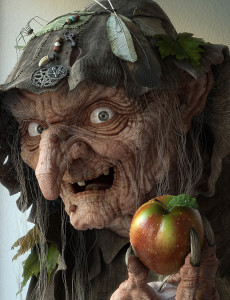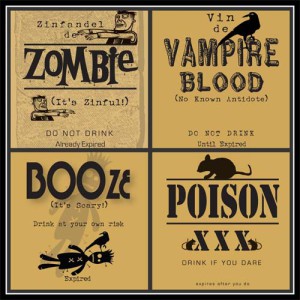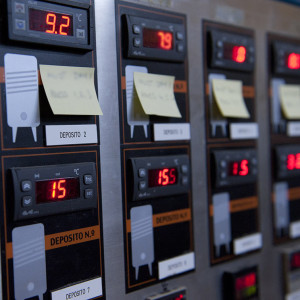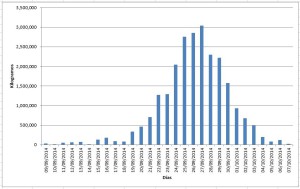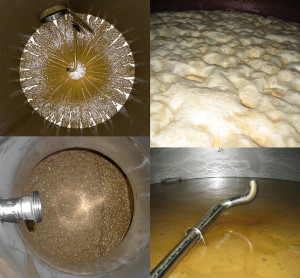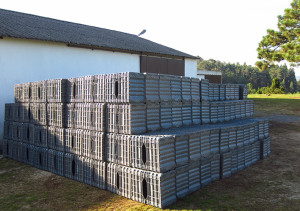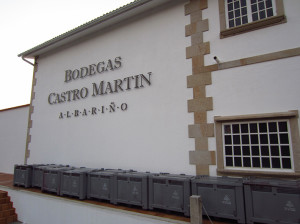‘Doing a vintage’
November 11th, 2014 | Harvest
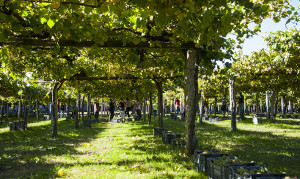 It has become quite fashionable in recent years for students to take a ‘gap year’ before starting university, and the vast majority use this break from their studies to go travelling. Of course their travel has to be financed, and one of the more popular jobs that students will often seek is ‘doing a vintage’, whether it be in Europe, North America or perhaps in the Southern Hemisphere. Unfortunately, working a vintage is probably just one of those romantic ideas, and the reality is often a lot harder than many of them would bargain for.
It has become quite fashionable in recent years for students to take a ‘gap year’ before starting university, and the vast majority use this break from their studies to go travelling. Of course their travel has to be financed, and one of the more popular jobs that students will often seek is ‘doing a vintage’, whether it be in Europe, North America or perhaps in the Southern Hemisphere. Unfortunately, working a vintage is probably just one of those romantic ideas, and the reality is often a lot harder than many of them would bargain for.
Firstly, it is always quite physically demanding work, and can be complicated by some very harsh working conditions – long hours working under the sun, and plenty of sticky grape juice that will no doubt attract many a flying insect (some of which might be the stinging variety). As I often mention, this is probably even more uncomfortable here in Galicia, as nearly all of our picking is from pergola, and standing all day with your arms extended overhead will certainly make your neck and shoulders ache.
When you sign up for harvest, you’re there to work, not to take selfies in the vineyard, or to rub elbows with a famous winemaker. You absolutely do not get to taste wine all day, if at all. In fact, the most prevalent beverage will be cold water and you’ll consider yourself lucky to have an ample supply to last the day (actually we supply the water to our pickers, we’re not that heartless!). At the end of a long day in the vineyard your prime objective will probably be to get a good night’s sleep, because tomorrow you’ll be doing the same thing all over again.
So why do it? Why would anyone ever consider picking grapes if the harvest experience is so horrible? Perhaps it’s because just as the work starts to get unbearable, it’s over. Or maybe it’s because you will feel connected to nature, to the elements or to your fellow pickers – after all, it’s much more satisfying than standing in a factory making widgets. Indeed, the list of the reasons to work a harvest is compelling – camaraderie, burning calories, beautiful vineyard locations, helping to make something meaningful and not least of all, having the chance to meet some really passionate people.
 It has become quite fashionable in recent years for students to take a ‘gap year’ before starting university, and the vast majority use this break from their studies to go travelling. Of course their travel has to be financed, and one of the more popular jobs that students will often seek is ‘doing a vintage’, whether it be in Europe, North America or perhaps in the Southern Hemisphere. Unfortunately, working a vintage is probably just one of those romantic ideas, and the reality is often a lot harder than many of them would bargain for.
It has become quite fashionable in recent years for students to take a ‘gap year’ before starting university, and the vast majority use this break from their studies to go travelling. Of course their travel has to be financed, and one of the more popular jobs that students will often seek is ‘doing a vintage’, whether it be in Europe, North America or perhaps in the Southern Hemisphere. Unfortunately, working a vintage is probably just one of those romantic ideas, and the reality is often a lot harder than many of them would bargain for.
Firstly, it is always quite physically demanding work, and can be complicated by some very harsh working conditions – long hours working under the sun, and plenty of sticky grape juice that will no doubt attract many a flying insect (some of which might be the stinging variety). As I often mention, this is probably even more uncomfortable here in Galicia, as nearly all of our picking is from pergola, and standing all day with your arms extended overhead will certainly make your neck and shoulders ache.
When you sign up for harvest, you’re there to work, not to take selfies in the vineyard, or to rub elbows with a famous winemaker. You absolutely do not get to taste wine all day, if at all. In fact, the most prevalent beverage will be cold water and you’ll consider yourself lucky to have an ample supply to last the day (actually we supply the water to our pickers, we’re not that heartless!). At the end of a long day in the vineyard your prime objective will probably be to get a good night’s sleep, because tomorrow you’ll be doing the same thing all over again.
So why do it? Why would anyone ever consider picking grapes if the harvest experience is so horrible? Perhaps it’s because just as the work starts to get unbearable, it’s over. Or maybe it’s because you will feel connected to nature, to the elements or to your fellow pickers – after all, it’s much more satisfying than standing in a factory making widgets. Indeed, the list of the reasons to work a harvest is compelling – camaraderie, burning calories, beautiful vineyard locations, helping to make something meaningful and not least of all, having the chance to meet some really passionate people.




